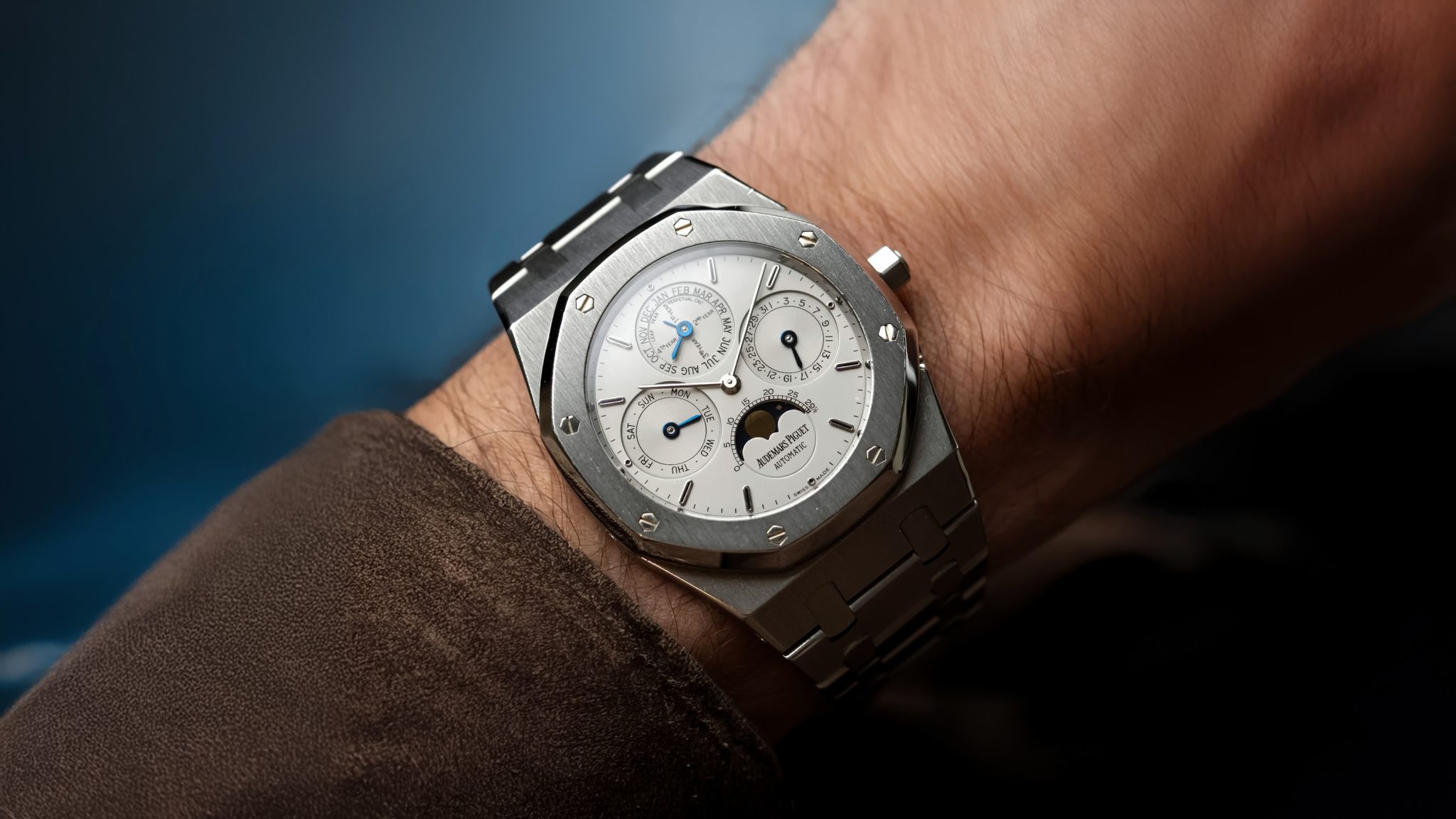
Yellow Oman Khanjar 1505 Rolex Date
In full transparency, when I first started down the rabbit hole of watch learning, I didn’t ‘get’ double signed dials. Tiffany, Oman, or Domino’s, it always seemed a bit too close to those car dealers who’d put a sticker that says ‘Dave’s Mercedes’ next to E63 with a gaudy license plate frame. Just no. But my initial understanding was entirely incorrect. This is more akin to having Horacio Pagani sign your dashboard and then ask you sign under him at his request. It’s story, provenance, personality, and a nod from the crown all wrapped into one meaningful stamp. And this one’s yellow.


Aside from the obvious scarcity, the khanjar at 6 ties this 1505 inextricably to Oman and Qaboos bin Said Al Said. These were made as gifts from the Sultan for family, visiting foreign dignitaries, government workers, or military. More than that, they tie together a very particular sort of collector. The khanjar, Tiffany, Qaboos or Assad signatures, even a Honda logo, they all tie together Rolex collectors who care enough about the lineage of each watch individually to learn its intricacies. You don’t just buy a Oman dial. You study other examples, learn what correct inking looks like, scour forum posts from a decade ago, and order three new books off Amazon. All for one louping session and purchase. We are the rare insane bunch who consider that quest worthwhile.
In this case, it really is. This is one of the most discreet and lovely khanjar examples you’ll find. It’s a 1505 Date, steel and rose gold, but it’s spent so much time in a safe that the rose gold has oxidized a depth that matches the warm dial perfectly. And the brightest remaining tone, as a result, is that khanjar in yellow. Most khanjars on early Dates are green, red, or gold. But there are a handful of Dates and Day-Dates from around this time with bright yellow ink.
As a result, there are very few examples to benchmark on values. A red Asprey khanjar 1601 Datejust sold at 14K at Sotheby’s two years ago. But the most recent yellow khanjar, an 1807 Day-Date,sold in 2017 for 44K at Phillips, without bracelet. So, a yellow khanjar 1505? It’s anyone’s guess at the moment, but somewhere in there. Unusual and usually lovely. Like most of the Omani dial collectors I’ve had the pleasure to meet. Great watches, even better people.


This example is in great shape. Its dial is very well-preserved in tone, text, and stamp. The tritium plots have a bit of what’s called ‘fried egg’ patina, normally observed on Havana dial Day-Dates, but occurs when the dial gets extremely hot and the tritium interacts with the dial’s champagne tone. Great lugs, very full case. The rose gold has a heavy patina that’s made it aesthetically deeper and darker. Moreover, it has its caseback sticker on. And hangtags, khanjar box, full set, all from a well-regarded Dubai retailer.








